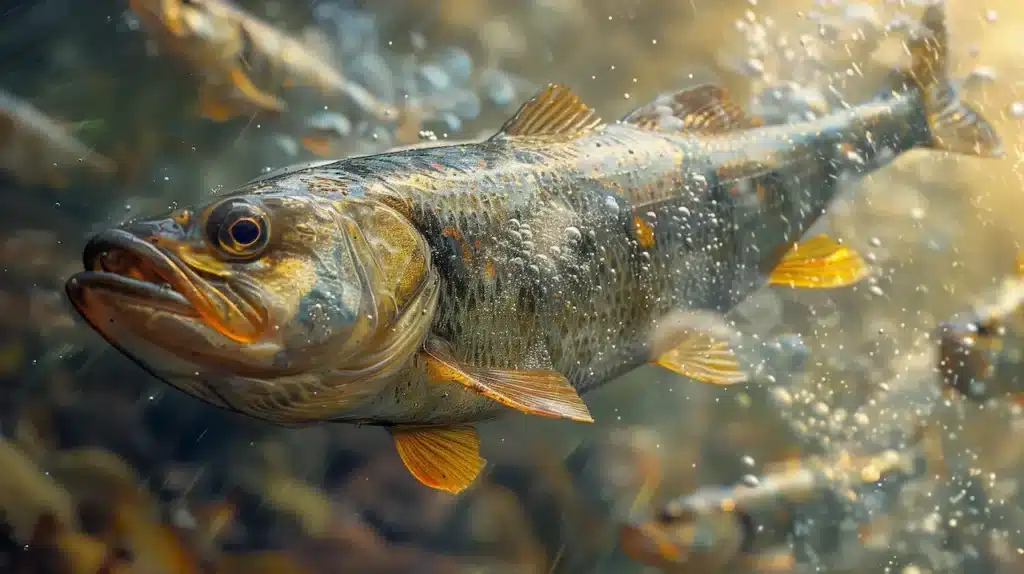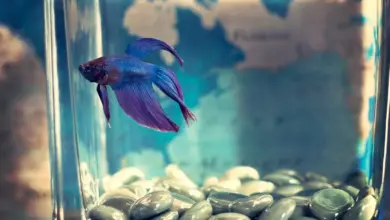How to Catch Largemouth Bass in Summer
How to Catch Largemouth Bass in Summer: Top Techniques for Hot Weather Angling
Summer bass fishing can be a challenge, but it’s also an exciting time to land some big catches. As the temperatures rise, largemouth bass change their behaviour and move to cooler, deeper waters. To catch largemouth bass in summer, Bass Online recommends focusing on fishing deep pockets near structures like ledges, points, and brush piles.
I’ve found that using the right lures and techniques is key to success in the summer heat. Spoons and stick-style baits like Senkos are great choices for enticing sluggish bass. Live bait can also be very effective, as it requires less effort for the fish to chase down.
When fishing for summer bass, I pay close attention to the time of day. Early mornings and late evenings are often the most productive, as the water is cooler and the fish are more active. Patience and persistence are important, as bass may be less motivated to chase prey in the warmer water.
[ez-toc]
Key Takeaways
- Fish deep structures and use slow-moving baits for summer bass
- Target cooler water during early mornings and late evenings
- Choose lures like spoons, stick baits, or live bait to entice sluggish bass

Understanding Largemouth Bass Behaviour in Summer
Summer brings big changes for largemouth bass. I’ll explain how water temperatures, feeding habits, and fishing pressure impact bass behaviour during the warmer months.
Optimal Water Temperatures for Bass Activity
Bass are most active when water temps hit 65-75°F. They speed up as the water warms, but slow down if it gets too hot.
In early summer, bass often hang out in shallow areas. They like spots with cover like logs or plants. As temps climb, many bass move to cooler, deeper water.
Some bass stay shallow all summer. They find shady spots or areas with good oxygen. Early mornings and evenings are prime times to catch these fish.
Bass Metabolism and Feeding Patterns
Warm water amps up a bass’s metabolism. They need to eat more to keep up their energy.
Bass often feed heavily at dawn and dusk. They may also bite well on cloudy days. Big bass sometimes hunt at night when it’s cooler.
In summer, bass like to eat:
- Bluegills and other small fish
- Crawfish
- Frogs
- Large insects
I find bass are drawn to fast-moving lures in summer. They’re more likely to chase prey in warm water.
Effects of Fishing Pressure on Bass
Summer brings more anglers to the water. This can make bass wary and harder to catch.
Bass may:
- Move to deeper water or thick cover
- Feed less during the day
- Become picky about lures
To beat the pressure, I try fishing:
- Early mornings or late evenings
- Midweek when it’s less crowded
- Areas that are hard to reach
Using quiet lures and stealthy approaches can help. I also switch up my tactics if the fish seem shy.
Locating Bass in Summer Habitats
Finding bass in summer means knowing their favourite spots. I’ll show you where to look for these fish when the water warms up.
Fishing on Ledges and Drop-offs
I always start by searching for ledges and drop-offs. Bass like these areas because they can move up to feed in shallow water, then drop back down to cooler depths. I use my fish finder to spot these underwater cliffs. The best ledges often have rocks or stumps nearby.
When I find a good ledge, I cast parallel to it. This keeps my lure in the strike zone longer. I also try different depths until I get bites. Some days the bass hang right on top of the ledge, other times they’re at the bottom.
The Role of Vegetation and Cover
Bass love to hide in plants during summer. I look for lily pads, grass beds, and fallen trees. These spots give bass shade and ambush points for prey.
I cast close to the edges of weed beds first. If that doesn’t work, I’ll pitch my lure right into openings in the vegetation. Topwater lures work great early in the morning near lily pads.
For fallen trees, I cast past them and bring my lure back along the trunk. Bass often wait there to attack passing baitfish.
Identifying Spawning Grounds
Even though spawning is over by summer, bass still hang out near these areas. I look for flat, shallow spots near deeper water. Gravel or sandy bottom is a good sign.
In natural lakes, I check out small coves and protected bays. These spots often have the right mix of depth and cover that bass like year-round.
In reservoirs, I focus on the upper ends of creeks. These areas tend to have more cover and attract baitfish, which in turn attract bass.
Advanced Fishing Techniques for Summer Bass
I’ve found some powerful methods to catch big bass in summer. These techniques will help you land more fish even when the water’s warm and the bass are picky.
Mastering the Use of Crankbaits and Spinnerbaits
Crankbaits and spinnerbaits are my go-to lures for summer bass. I use deep-diving crankbaits to target bass in cooler, deeper water. I cast them near drop-offs and reel steadily.
For spinnerbaits, I focus on shady areas near cover. I vary my retrieve speed to trigger strikes. A slow roll often works best in summer.
I match lure colours to local baitfish. Shad patterns are usually effective. On bright days, I opt for more natural colours. In murky water, I pick brighter lures for more visibility.
Strategic Use of Plastic Worms and Soft Plastics
Soft plastics are super versatile for summer bass fishing. I rig plastic worms Texas-style to fish them weedless through cover. A slow drag along the bottom often entices bites.
For open water, I use a drop shot rig with small soft plastic baits. This lets me keep the lure in the strike zone longer. I twitch the rod tip gently to give the bait life-like action.
Creature baits work great for pitching into heavy cover. I use heavy line and strong hooks to pull bass out of thick vegetation.
Adapting to Low Light Conditions for Night Fishing
Night fishing can be very productive in summer. I use dark-coloured lures that create a strong silhouette. Black or dark blue soft plastics are my top picks.
I fish topwater lures like buzzbaits just after sunset and before sunrise. The noise attracts bass in low light. I also use glow-in-the-dark lures or add luminescent tape to my baits.
I focus on areas where bass feed at night, like points and shallow flats near deep water. I move slowly and quietly to avoid spooking fish. A black light helps me see my line for detecting subtle strikes.
Lure Selection and Bait Presentation
Picking the right lures and using them well is key for catching bass in summer. I’ll share my top tips for lures, live bait, and fishing different water types.
Selecting the Right Summer Bass Fishing Lures
I like to use topwater lures early in the morning or late evening when bass are active near the surface. Buzzbaits and poppers work great then. During the day, I switch to spinnerbaits or chatterbaits. These lures mimic baitfish and create vibrations bass can’t resist.
For deeper water, I use skirted jigs or lipless crankbaits. These lures can reach bass hiding in cooler depths. I vary my retrieve speed to find what the fish want that day.
Colours matter too. In clear water, I pick natural shades like green or brown. For murky water, I go with bright colours like chartreuse or white to help bass see the lure.
Effective Live Bait Techniques
Live bait can be a game-changer for summer bass. I often use minnows or shiners, rigging them on a light wire hook. I cast near structure like logs or weed beds where bass hide.
Nightcrawlers work well too. I thread them onto a hook and add a small weight to get them down to the fish. Sometimes I use a bobber to keep the bait at the right depth.
For big bass, I like using live bluegills or small sunfish. I hook them through the back and let them swim freely. This can attract trophy-sized bass looking for a meal.
Adjusting Presentations for Clear vs Murky Water
In clear water, bass can see better but are also more wary. I use lighter line and make long casts to avoid spooking them. Natural-looking lures and subtle movements work best here.
For murky water, I switch to brighter lures and add more action to my retrieve. The extra noise and vibration help bass find the bait. I also fish closer to cover, as bass feel safer in low visibility.
In both cases, I look for shady spots. Bass often hang out in shadows to ambush prey. Casting to these areas can lead to more bites.
